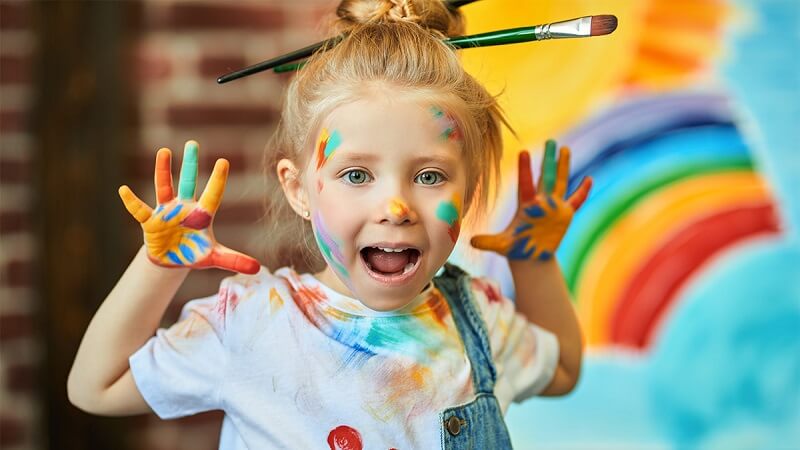Spend five minutes with a three-year-old, and you’ll see the world in a new light. One minute they’re building a block tower with laser focus; the next, they’re passionately negotiating over snack choices, asking why the sky is blue, and singing their favourite made-up song—often all at once. Life with a three-year-old is a whirlwind of discovery, energy, and emotion. It’s chaotic, yes—but it’s also a deeply important stage of development.
At this age, children are growing rapidly not just in size but in personality, understanding, and independence. That’s why environments like child care Matraville are so valuable during these formative years—they provide the right mix of structure, freedom, and support that helps children thrive socially, emotionally, and cognitively.
A Time of Enormous Brain Growth
Three-year-olds are in the middle of a major developmental leap. Their brains are busy forming connections that will shape how they think, learn, and relate to others. You might notice:
- A surge in vocabulary and more complex sentence use
- An increased interest in “why” questions
- Greater awareness of emotions—both their own and others’
- More sophisticated play, including imaginary scenarios and role-playing
This period is often called the “magic years” because of the blend of wonder and logic that defines a child’s thinking. They’re beginning to understand cause and effect but still believe in the fantastic. A cardboard box can be a rocket ship, a stick becomes a magic wand, and a puddle is an ocean to conquer.
The Role of Curiosity (and Why It Looks Like Chaos)
Curiosity is at its peak around age three. Children explore by touching, climbing, running, throwing, and asking endless questions. This exploration is how they learn about the world and their place in it. While it might feel like mischief to adults, it’s usually a child testing limits, experimenting, and gathering data.
It’s not always neat. You may find shoes in the fridge, paint on the dog, or questions that catch you completely off guard. But this seemingly chaotic behaviour is actually a sign of healthy, engaged development.
Supporting this curiosity means offering safe spaces to explore and adults who respond with patience and encouragement—even when things get messy.
Developing Social Skills Through Play
Three-year-olds are becoming increasingly social. They begin to shift from playing alongside others (parallel play) to playing with them (cooperative play). This is where many social lessons begin:
- Sharing and turn-taking
- Negotiating and problem-solving
- Expressing needs with words
- Managing frustration and disappointment
Play is the training ground for future relationships, and it often comes with a few bumps along the way—tantrums, snatching toys, or storming off. These moments, while challenging, are valuable opportunities to teach empathy, boundaries, and communication.
Emotional Growth: Big Feelings, Bigger Reactions
Emotions at age three are intense. Children are learning how to recognise and express what they feel, but they don’t yet have the words or self-control to manage those feelings all the time. This can lead to mood swings, outbursts, or what seem like irrational meltdowns.
Consistency is key. Calm, predictable responses from adults help children feel safe and begin to understand how to regulate themselves over time. Encouraging them to name their emotions, take deep breaths, or ask for help can lay the groundwork for lifelong emotional intelligence.
Independence and the Power of Choice
Three-year-olds are also eager to assert their independence. “I can do it myself!” is a phrase many parents and educators hear daily. While this independence is exciting, it can also lead to power struggles.
One of the best ways to support autonomy without battles is by offering limited choices: “Would you like the red cup or the blue one?” This gives children a sense of control while keeping boundaries clear and manageable.
This balance of freedom within structure is what helps children develop confidence, resilience, and decision-making skills.
How Quality Childcare Supports This Stage
In a well-run early learning setting, three-year-olds get the support they need to stretch and grow while feeling safe and understood. Experienced educators design environments that:
- Encourage exploration without risking safety
- Support emotional expression and teach self-regulation
- Offer a blend of guided activities and free play
- Model respectful communication and problem-solving
- Foster a sense of belonging and routine
These settings also help children develop confidence outside the family unit, setting the stage for a smoother transition into formal schooling.
Supporting Your Three-Year-Old at Home
There’s no manual for parenting a three-year-old, but a few guiding principles can make the journey more manageable and meaningful:
- Stay calm and consistent, especially during emotional outbursts
- Create predictable routines to reduce anxiety and promote cooperation
- Let them help, even if it takes longer (they love to feel capable)
- Read together daily, expanding vocabulary and building connection
- Join in their play, which strengthens your bond and helps you understand their world
Most importantly, remember that your child’s brain is working incredibly hard. What may seem like resistance or mess is often learning in disguise.
Embracing the Magic and the Mayhem
Life with a three-year-old isn’t always easy—but it is deeply rewarding. The intense curiosity, growing independence, and emotional rollercoasters are all signs of healthy development. With the right balance of patience, structure, and encouragement, you’re helping shape a confident, curious learner who’s beginning to understand the world—and their own place in it.
